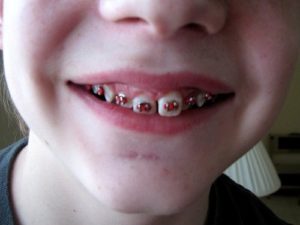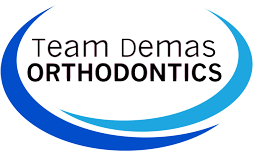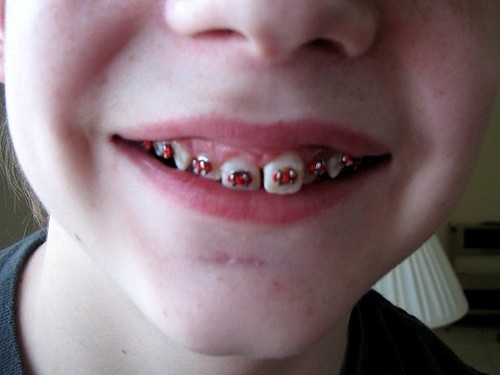Searching For a Stunning Smile?
Braces are a fact of life for over 4 million Americans, and for many teens, it’s a rite of passage. That said, however, there’s never a time that’s “too late” to consider an orthodontic consultation to improve the condition of your smile, or correct a jaw or bite problem. In fact, increasing numbers of orthodontic patients are adults looking to improve poor braces correction from the past or seeking to finally get that amazing, confident smile they’ve always wanted. It’s really never too late and there have been significant advances in the speed of correction and the cosmetic appearance of corrective braces that go a long way to improve patient comfort and success. Of these newer options, lingual braces are some of the most advanced and aesthetically appealing.
What Types Of Braces Are Available?
In terms of providing corrective support, there are multiple types of treatments. The most common would be:
- Traditional braces – metal or ceramic nodes on the front of teeth that have a wire affixed to them.
- Invisalign – progressive sets of clear aligners that fit over the teeth and are practically invisible.
- Behind-the-teeth braces – metal braces that sit behind teeth rather than in front, making them all but undetectable visually.
Traditional Braces
These are the most common braces seen, the one’s most people likely picture when they think of braces. They use the metal or ceramic nodes, along with rubber bands that affix to the wire, to slowly pull gaps closed and correct alignment. They can address nearly any issue that orthodontics can treat without surgery, but they’re not the most cosmetically appealing, though they are usually cheaper than other solutions. In addition, the wires and mounting can poke and prod gums and lips, and there’s a somewhat restrictive list of foods that you cannot eat. Brushing them can also be an issue, as it takes specialized brushes to get between the brackets and wires and the teeth.
Pros:
- Often the cheapest option
- Can address a wide variety of orthodontic issues
Cons:
- Can be unappealing aesthetically
- Require more specialized and intricate care
- Often uncomfortable
Invisalign
Invisalign is a company that takes a mold of your teeth, creates a projection of what you’d want at the end of your treatment, and then creates progressive trays that you place in your mouth, which slowly guides your teeth to where they need to be. They are clear, making them nearly invisible, and they lack the pointed metal and wires of traditional or behind-the-teeth braces, so they are usually more comfortable. The deal with Invisalign is that, like the retainers you get after initial braces, they can be removed in order to eat, play musical instruments, and brush. They might interfere with speaking clearly and need some adjustment to overcome this, though it’s usually not a huge problem. Invisalign is also more expensive than traditional braces.
Pros:
- Clear, and nearly invisible
- Convenient to clean, easily removable
- More comfortable than traditional braces
- Often a shorter treatment time compared to traditional
Cons:
- Generally more expensive than traditional braces
- Cannot treat as wide a range of needs as traditional braces so they might not be an option in all cases
Besides Straight Teeth, What are the Benefits of Braces?
Lingual Braces
A newer option that is available is treatment with behind-the-teeth braces. These are similar to traditional braces in that they use a wire system to slowly pull teeth to where they need to be, but they sit behind the teeth and palate, making them all but undetectable to other people. Because these “hidden” braces are similar in function to traditional braces, they can address issues that clear aligners cannot, making them aesthetically pleasing while being as functional as necessary. These types of braces can also correct bite issues, and often require less individual visits with your orthodontist, which is a benefit for busy parents, in addition to saving costs on the appointments themselves.
Though they are more visually appealing, they are very similar to traditional braces, and as such, have similar downsides. They can cause discomfort along the gum and tongue lines, impede ease of talking until you adjust to their presence, and take longer to clean. The length of treatment is generally about the same, and in some cases shorter, but they are often more expensive overall.
Pros:
- Almost completely undetectable
- Require fewer orthodontist visits
- Functionally capable of treating a wide variety of issues, especially compared to invisible aligners
Cons:
- Can be difficult to talk with, and need extra care when cleaning
- Are often more expensive than traditional braces
- Create some level of discomfort associated with the wires and nodes on teeth
Getting Ready For Your Appointment
Speaking with an orthodontist does not have to be worrisome. Modern techniques can address any problem you are

Photo credit: kindagetmego via Foter.com / CC BY-NC-SA
facing, and usually in a way that is significantly less visually obvious than the braces of years ago. Going into a specialist knowing what matters most to you – aesthetics, the length of treatment, cost, etc. – will go a long way to helping the orthodontist solve your specific needs, and in a way with which you’re satisfied and comfortable.
If you’re interested in lingual braces in the Watertown area, or if you’re in Connecticut in general and are seeking a qualified, experienced orthodontist, allow Dr. Demas of Team Demas Orthodontics to assist you. Dr. Demas runs an award-winning practice, having most recently rated in the Top Orthodontists 2014 and 2015 by Connecticutmag.com, as well as numerous times before that.
Dr. Demas and his staff are waiting to help you on the path to realizing that gorgeous smile you’ve always wanted.
Team Demas Orthodontics
27 Meriden Ave #2a, Southington, CT 06489, USA
Phone: 860-276-0333




